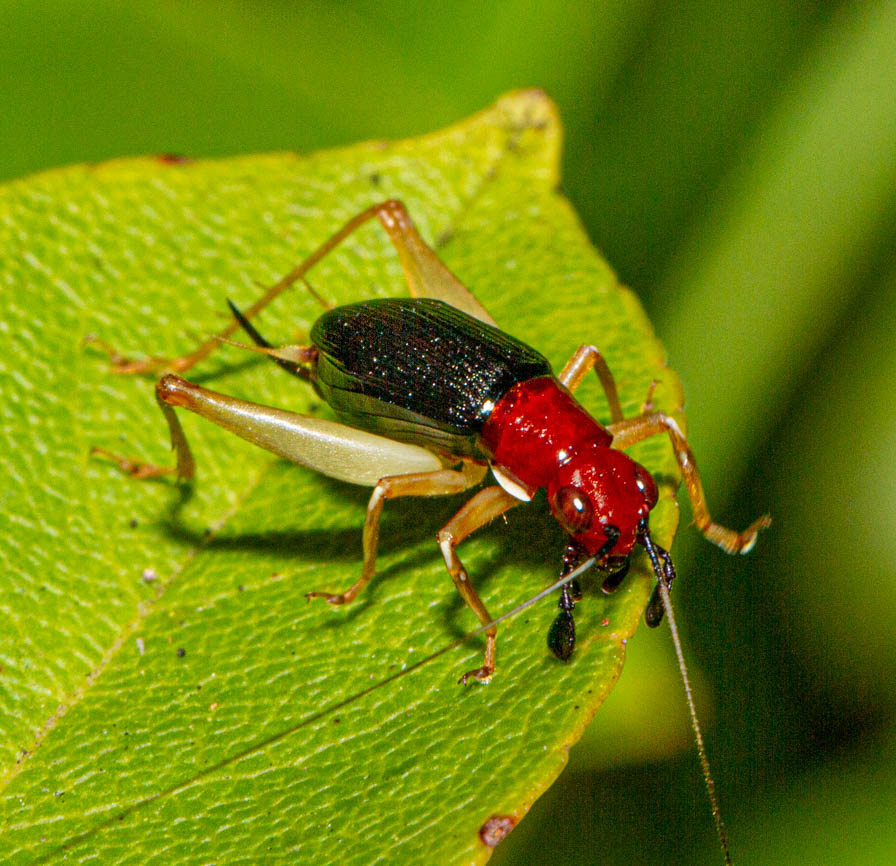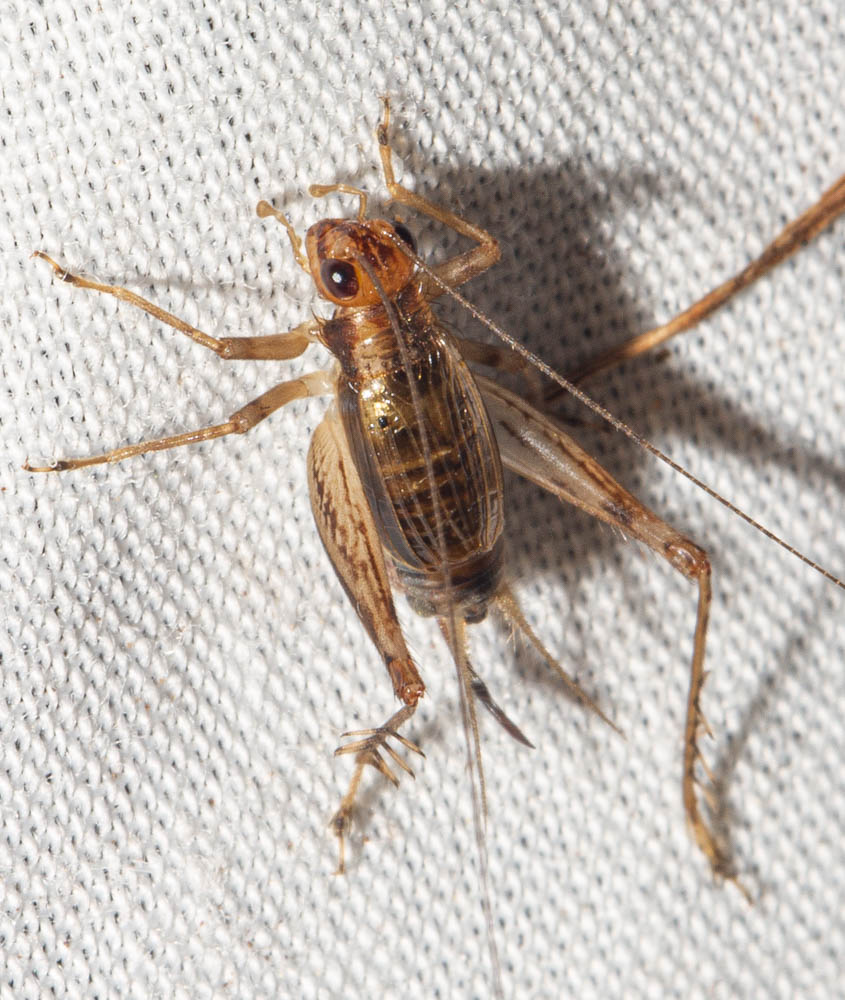2017 Carolina Beach State Park Bioblitz
In the 1920s and 30s, Bentley Fulton, NC State University's renowned orthopterist, made a number of collecting trips to Carolina Beach, capturing, among other things, three crickets that would later become the type specimens for the Salt-Marsh Ground Cricket (Allonemobius sparsalsus), Beach Trig (Anaxipha litarena) and Tidewater Trig (Anaxipha tinnula). No modern records appear to exist at this location, however, for any of these species (Singing Insects of North America, 2017). It thus seemed especially appropriate in the bioblitz conducted at Carolina Beach State Park on September 30th that crickets be a main target.
Crickets are not the easiest species to observe in the field. Following in Fulton’s footsteps – he was one of the main pioneers in using the songs produced by crickets in studying their taxonomy and biology – Bo Sullivan and I used sound recordings as our main way of collecting specimens (sensu lato), later analyzed through use of audio-spectrograms. Despite the fairly windy conditions that limited even our ability to hear our subjects, we managed to record nine species that we were able to later identify based on their spectrograms, all of which are attached. One additional species, Slosson's Scaly Cricket (Cycloptilum slossoni), was captured at bait but not clearly identified by song.

Unfortunately, none of three main targets were observed. Checking the dates of observation given on the Singing Insects of North America website, we may have been too late in the season, with all three maturing during the summer and only rarely, if at all, singing past mid-September. Also checking Fulton’s original collection data, it also appears that he found all three along the ocean side of the peninsula, in salt-spray dominated communities – ocean dunes and salt marshes – rather than mainly tidal freshwater habitats or aeolian dunes found along the Cape Fear where we confined our searches.
On the other hand, we recorded several species that appear to be new additions to the state park, including Say's Trig (Anaxipha exigua), Fast-tinkling Trig (Anaxipha tinnulacita), Forest Scaly Cricket (Cycloptilum trigonipalpum), Jumping Bush Cricket (Orocharis saltator), False Jumping Bush Cricket (O. luteolira), Handsome Trig (Phyllopalpus pulchellus), and Japanese Burrowing Cricket (Velarifictorus micado).

In connection with Fulton, the two species of Anaxipha are particularly interesting, since he was the one that distinguished them based on their songs (Fulton, 1956), although he could not find any morphological differences between them and consequently did not describe them as separate species (done later by Walker and Funk, 2014, who acknowledged Fulton’s contributions). The Fast-tinkling Trig is also very closely related to our targeted Tidewater Trig and has an extremely similar song. At around 67 degrees on Sunday morning when we recorded this species, it had a pulse rate (number of “tinks” per second) between 9 and 10, which is what would be predicted for tinnulacita, but more than for tinnula, which would be somewhere around 4-5 (see Figure 4 in Walker and Funk). The habitat also matches that of tinnulacita better: this species was calling primarily from understory shrubs (including Ilex glabra) within a swamp forest, whereas tinnula is associated with Cordgrass and other herbaceous species in tidal marshes. The one species that we recorded right at the edge of a marsh (freshwater) – appearing to be singing from the basal clump of a Bullrush – was Say’s Trig, closely matching the description given by Fulton of this species’ association with low, wet herbaceous vegetation bordering wetlands. The pulse rate of this species was about 43 syllables per second, somewhat higher than predicted for this species at 67 degrees, but the closest match of the species occurring in this area (Eunemobius melodius is another possibility, but is far more rarely encountered).
One other bonus recording made while searching for crickets on Sunday morning was of a small unseen mammal heard vocalizing close to where the Fast-tinkling Trigs were heard. Although only a high, thin squeaking was audible, the spectrogram (attached) shows a rich and complex series of descending, slurred notes. Although I originally thought it was a shrew, a mouse - possibly a Woodland Vole - now seems more likely (thanks to Matina Kalcounis-Ruppell of UNC-Greensboro for this determination).
Fulton, B.B. 1956. The genus Anaxipha in the United States (Orthoptera: Gryllidae). J. Elisha Mitchell Sci. Soc. 72: 222-243.
Walker TJ, and Funk DH. 2014. Systematics and acoustics of North American Anaxipha (Gryllidae: Trigonidiinae). Journal of Orthoptera Research 23: 1-38.